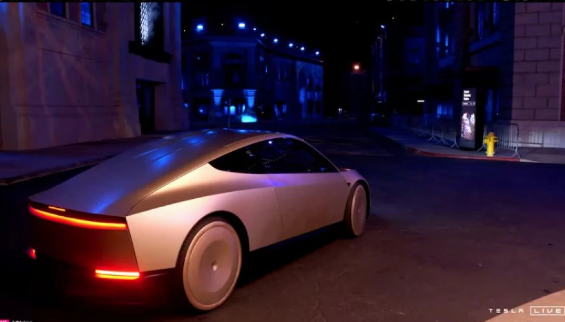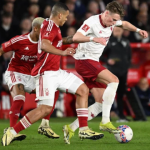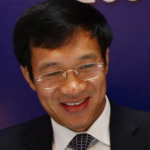At a high-profile event on Thursday, Elon Musk unveiled a robotaxi featuring two gull-wing doors and lacking a steering wheel or pedals, alongside a new robovan, marking Tesla’s shift from being a low-priced mass-market automaker to a robotics manufacturer. Musk arrived at the event in a “Cybercab,” which he announced would begin production in 2026 and be priced under $30,000 (approximately Ksh. 3.9 million). He indicated that operational costs would be around 20 cents per 1.6 km over time, with inductive charging that requires no plugs.
“The autonomous future is here,” Musk stated. “We have 50 fully autonomous cars here tonight. You’ll see Model Ys and the Cybercab. All driverless.” He also introduced a larger self-driving vehicle called the Robovan, which can accommodate up to 20 passengers, and showcased Tesla’s Optimus humanoid robot.
Musk envisions operating a fleet of self-driving Tesla taxis that passengers can request via an app. Individual Tesla owners will also have the opportunity to earn money by listing their vehicles as robotaxis on the app.
The event, held at the Warner Bros studio near Los Angeles, was titled “We, Robot,” a nod to Isaac Asimov’s “I, Robot” science-fiction stories, reflecting Musk’s vision for Tesla to be recognized as an AI robotics company rather than just an automaker. Attendees included investors, stock analysts, and Tesla enthusiasts.
However, many investors were left disappointed, hoping for specific details on how quickly Tesla could scale up robotaxi production, secure regulatory approval, and implement a solid business plan to outpace rivals like Alphabet’s Waymo. “Everything looks cool, but not much in terms of timelines. I’m a shareholder and pretty disappointed. I think the market wanted more definitive timelines,” said Dennis Dick, an equity trader at Triple D Trading. “I don’t think he said much about anything… He didn’t give much info.” Musk acknowledged that he tends to be optimistic with timeframes.
**MISSED PROMISES**
In 2019, Musk expressed strong confidence that Tesla would have operational robotaxis by the following year. However, after failing to meet those promises, he shifted his focus this year to developing the vehicles, abandoning plans for a smaller, more affordable car that many believed was crucial for countering the slowing demand for electric vehicles (EVs).
Tesla now faces the possibility of posting its first-ever decline in deliveries this year, as purchasing incentives have not succeeded in attracting enough customers to its aging EV lineup. Additionally, significant price cuts intended to counteract high interest rates have further squeezed profit margins.
The complexities of the technology and stringent regulations have resulted in billions of dollars in losses for other companies trying to enter the robotaxi market, leading some to shut down entirely. Nevertheless, several companies continue to pursue this venture, including General Motors’ Cruise, Amazon’s Zoox, and various Chinese firms like WeRide.
Unlike competitors that utilize costly hardware such as lidar, Musk aims to keep costs low by relying solely on cameras and AI for the Full Self-Driving (FSD) system. However, FSD has come under regulatory and legal scrutiny due to requiring constant driver attention and has been linked to at least two fatal accidents involving the technology.
“We do expect to start fully autonomous unsupervised FSD in Texas and California next year,” Musk stated. “That’s with the Model 3 and Model Y.” He did not specify whether the robotaxis would incorporate any new technology or rely on FSD.



